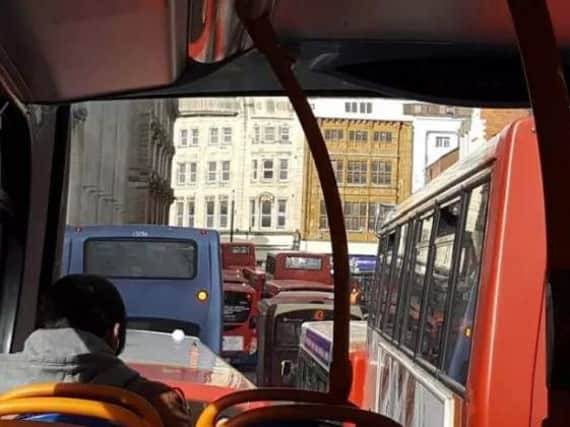Council admits Northampton's Drapery is a pollution hotspot a year after Chronicle & Echo investigation


The list of zones in Northampton where levels of a poisonous diesel byproduct have exceeded legal limits has grown to from seven to 10.
Three new areas in the town with high traffic have been flagged as 'areas of concern' for producing pollution.
Advertisement
Hide AdAdvertisement
Hide AdThey are the junction of Abington Square and Wellingborough Road, the junction of Northgate Bus Station and the Drapery, and the White Elephant junction on Kettering Road.
Buses began queueing down The Drapery after the demolition of the Greyfriars Bus Station and the opening of the Northgate Bus Station.
In 2017, the Chron carried out its own survey to examine the levels of poisonous nitrogen dioxide (NO2) in The Drapery. The results showed the town centre street produced well-above the legal limits of NO2.
But the borough council failed to produce any monitored results for the Drapery when it published data from a year-long survey in February 2018.
Advertisement
Hide AdAdvertisement
Hide AdNow, the council says it has 'identified' the Drapery, Abington Square and the White Elephant junction as a cause for concern.
The legal limits for NO2 in any area in the UK are 40 micrograms per metre cubed, or ug/m3.
Figures for 2017 showed how high-pollution areas like St James Road, Campbell Square and Harborough Road are producing up to 70ug/m3 of NO2.
A borough council report in 2017 linked one-in-20 deaths in Northampton to air pollution.
Advertisement
Hide AdAdvertisement
Hide AdNow, a survey has launched to decide whether a town-wide Air Quality Management Zone should be created instead of monitoring those 10 pollution hotspots individually.
After this, the council says it will be able to produce an 'action plan' to reduce pollution in the town.
It comes after opposition councillors yesterday called for the borough council to publish its raw data on vehicle pollution every month. Currently, the Guildhall publishes nitrogen dioxide data every three months.
Councillor Mike Hallam, cabinet member for environment, said: “We are keen to hear residents views on how best to tackle these areas, whether they would rather we create three new Air Quality Management Areas or approach them in a more joined-up fashion by consolidating them into one. “